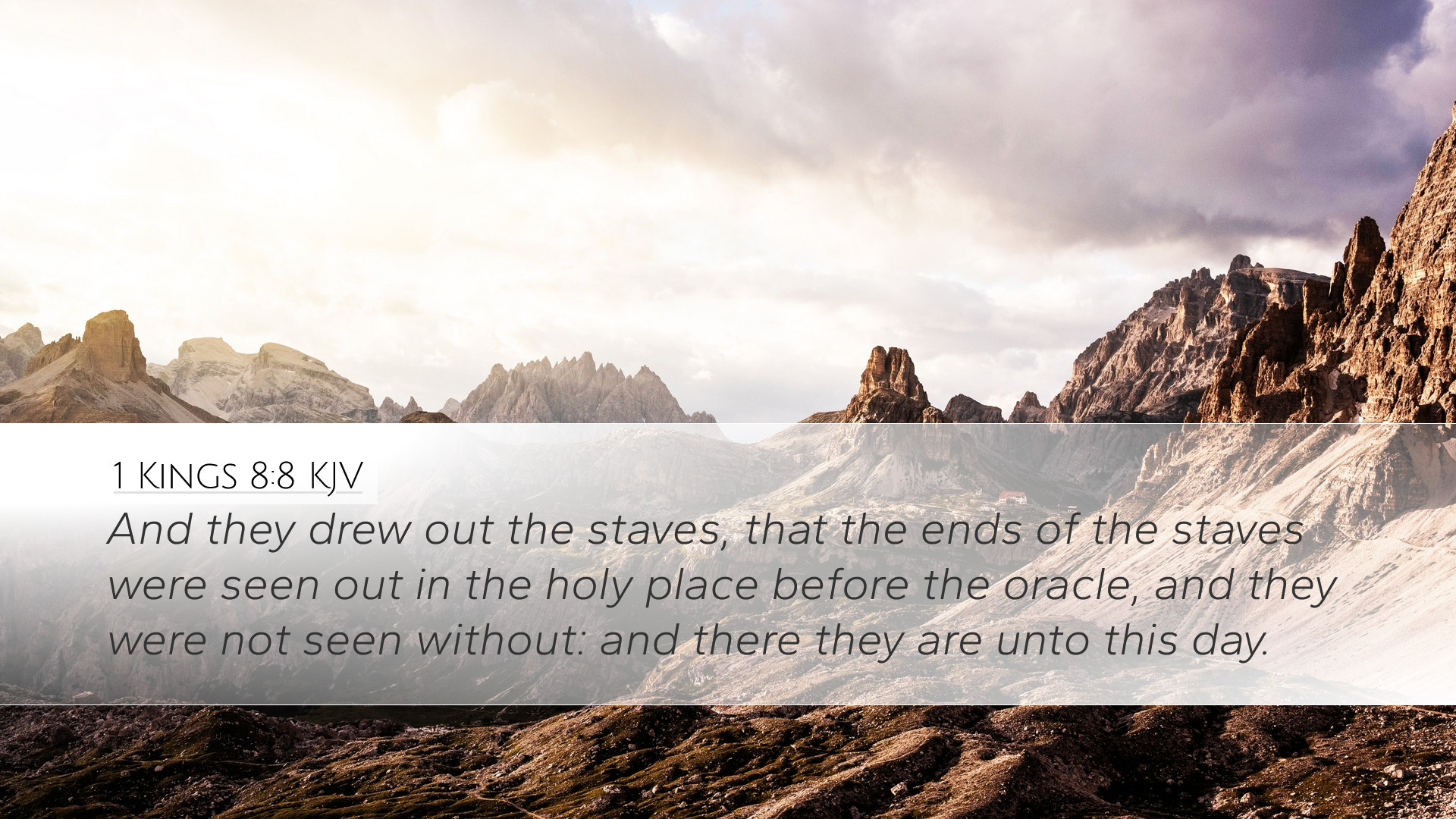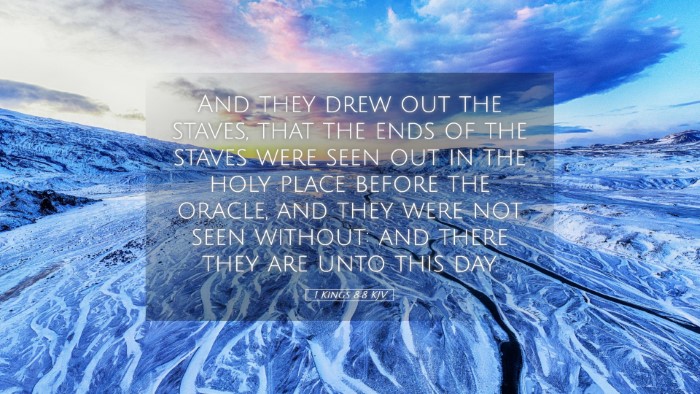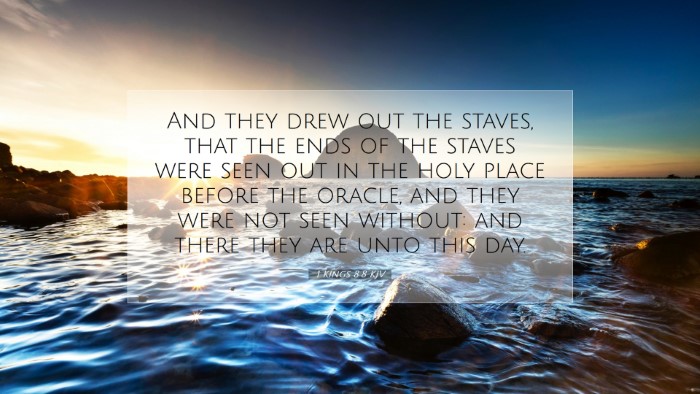Commentary on 1 Kings 8:8
Bible Verse: "And they drew out the staves, that the ends of the staves were seen out in the holy place before the oracle, and they were not seen without. And there they are unto this day."
Introduction
This verse describes a significant moment in the Old Testament during the dedication of Solomon's temple. It focuses on the Ark of the Covenant and the staves used to carry it, symbolizing God's presence among His people. To understand the depth of this passage, we will glean insights from historical commentaries, specifically from Matthew Henry, Albert Barnes, and Adam Clarke, providing a comprehensive exploration of its theological implications.
The Ark of the Covenant
At the center of this verse is the Ark of the Covenant, a sacred symbol of God’s presence and covenant with Israel. Matthew Henry notes that the Ark contained the tablets of the Ten Commandments, signifying God's law and His relationship with His people. The staves were intended for transportation, as the Ark was not to be touched directly, emphasizing the holiness of God and the reverence He demands.
Significance of the Staves
Albert Barnes highlights the practical necessity of the staves. They were used when the Israelites moved in the wilderness, symbolizing God's guidance during their journey. The fact that the staves were drawn out and visible in the holy place before the oracle indicates a reminder of the journey of faith the Israelites embarked upon, always under God’s direction.
The Visibility of the Staves
Adam Clarke elaborates on why the ends of the staves were visible and not seen without. He explains that it served as a continual witness to the priests and people of the necessity of God’s presence in their lives. The Ark represented the covenant, which was a constant reminder of God’s promises and His faithfulness. The staves serve as a metaphor for our need to carry the presence of God within our lives wherever we go.
The Holiness of God
This passage underscores the profound holiness of God. The Ark was placed behind a veil (the oracle), denoting the sanctity of God's presence. Matthew Henry emphasizes the importance of approaching God with reverence, which the staves’ use symbolizes. This holy reverence is critical in worship and our approach to God.
Covenant and Community
Albert Barnes points out that the Ark was central to Israel's identity and worship. It was not just a religious artifact; it embodied the covenant relationship between God and His people. The visibility and careful handling of the staves reinforced unity within the community, focusing their worship and identity on God’s unwavering promise.
Theological Implications
The verse invites theological reflections on aspects such as God’s presence, holiness, and the nature of worship. For pastors and theologians, this passage brings forth the concept of the immutable nature of God's promises. The phrase "they are there unto this day" indicates an enduring legacy, which calls scholars to reflect on how modern believers uphold the principles of God's holiness and presence in their worship practices today.
Application for Today
In contemporary Christian practice, this verse challenges believers to consider how they honor the presence of God in their midst. The visibility of the staves serves as a reminder that our lives should display the character of Christ, guiding others to Him. Furthermore, it invites a discussion about the sacredness of our worship spaces and practices, urging modern worshipers to approach God with the same reverence that these ancient Israelites demonstrated.
Conclusion
1 Kings 8:8 serves as a profound testament to the relationship between God and His people, the reverence due to Him, and the importance of remembering our spiritual journeys. In combining insights from historical commentaries, we realize the timeless nature of God’s word and its application in the lives of believers today. As pastors and theologians continue to explore the depths of Scripture, may they seek to uphold the holiness of God in every aspect of worship and community life.


